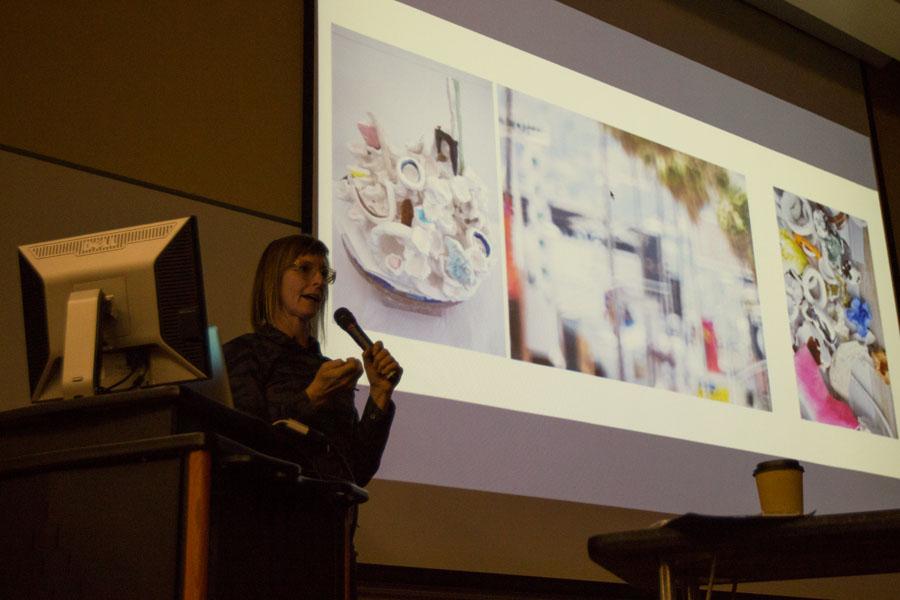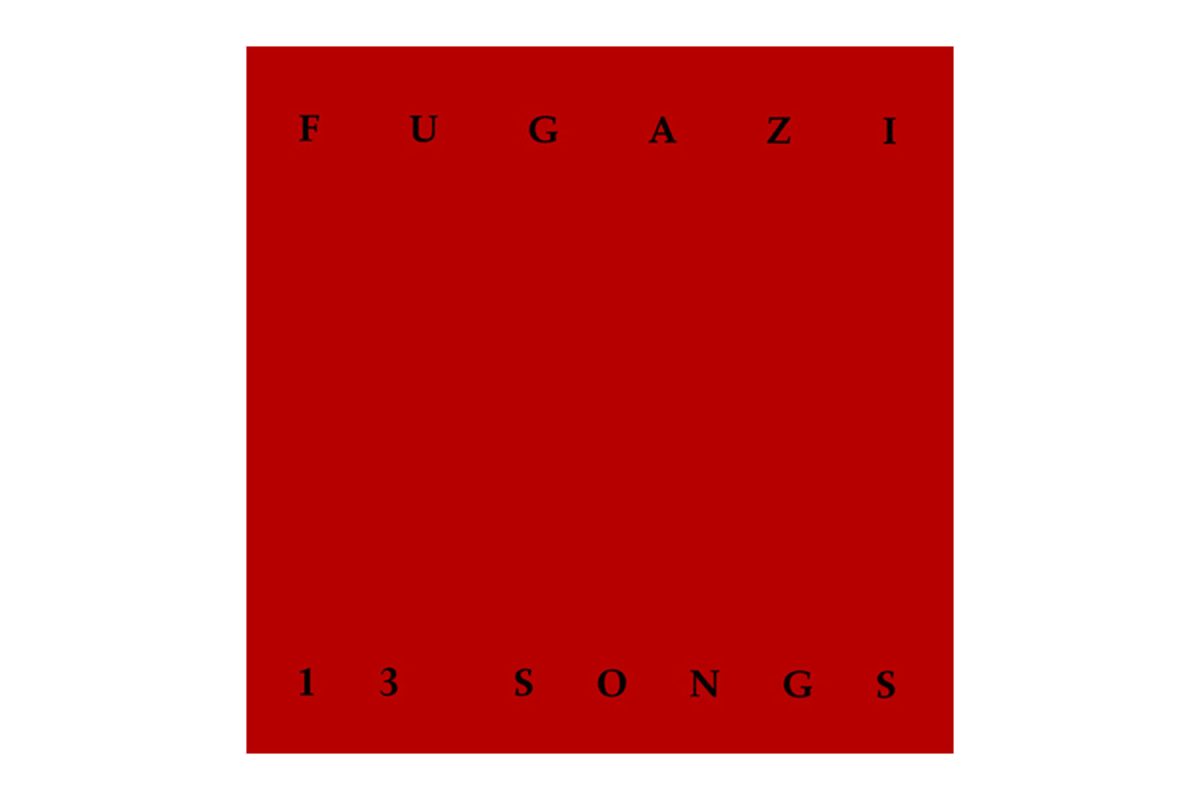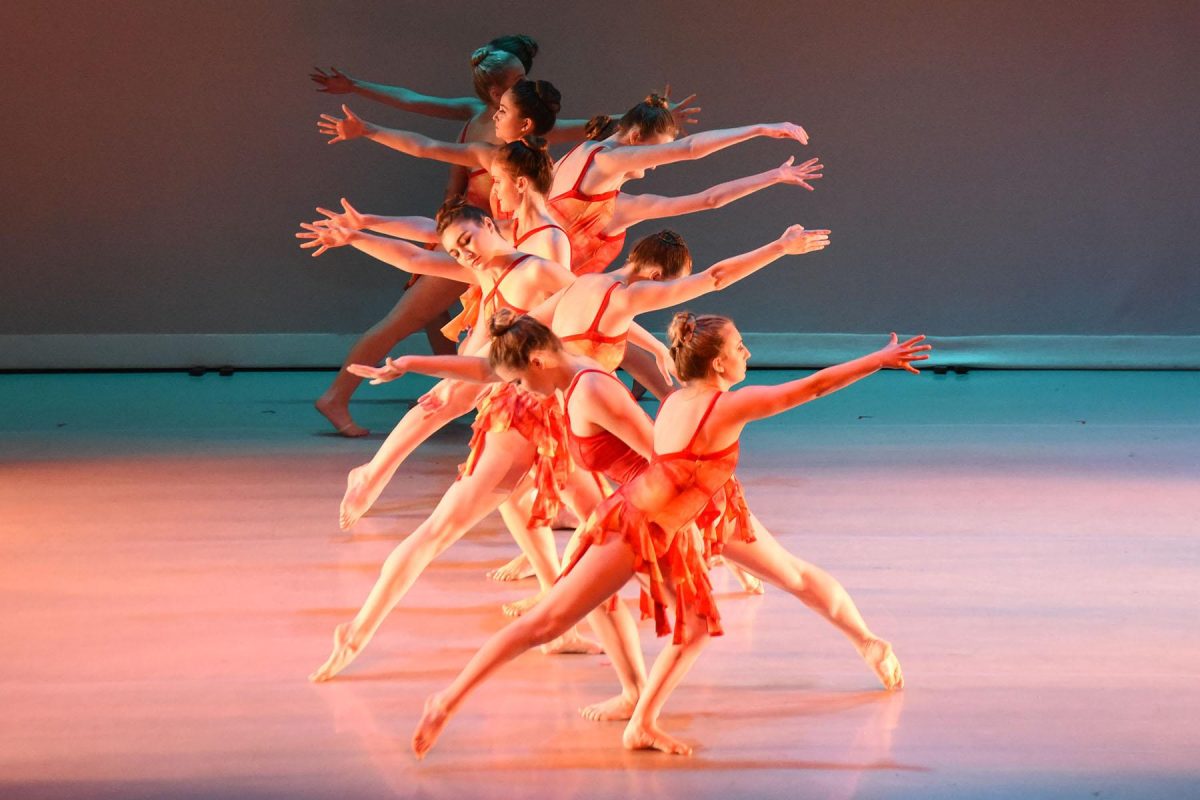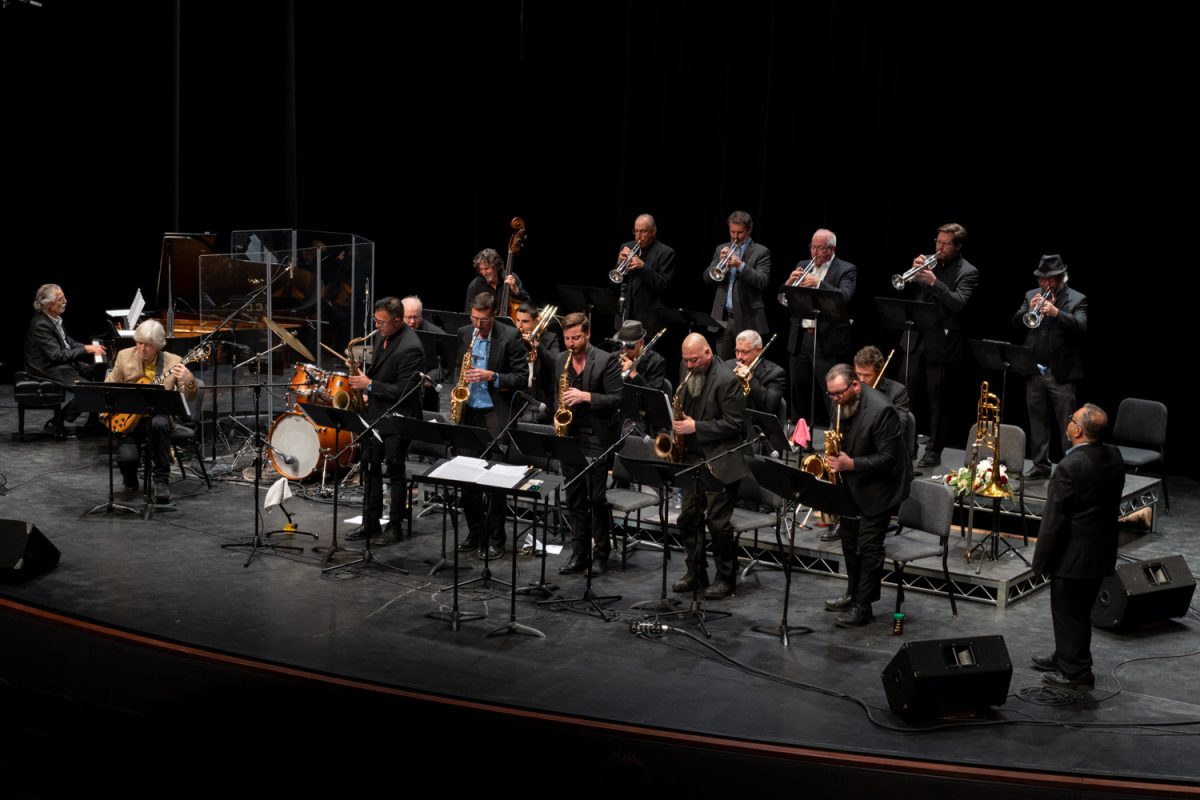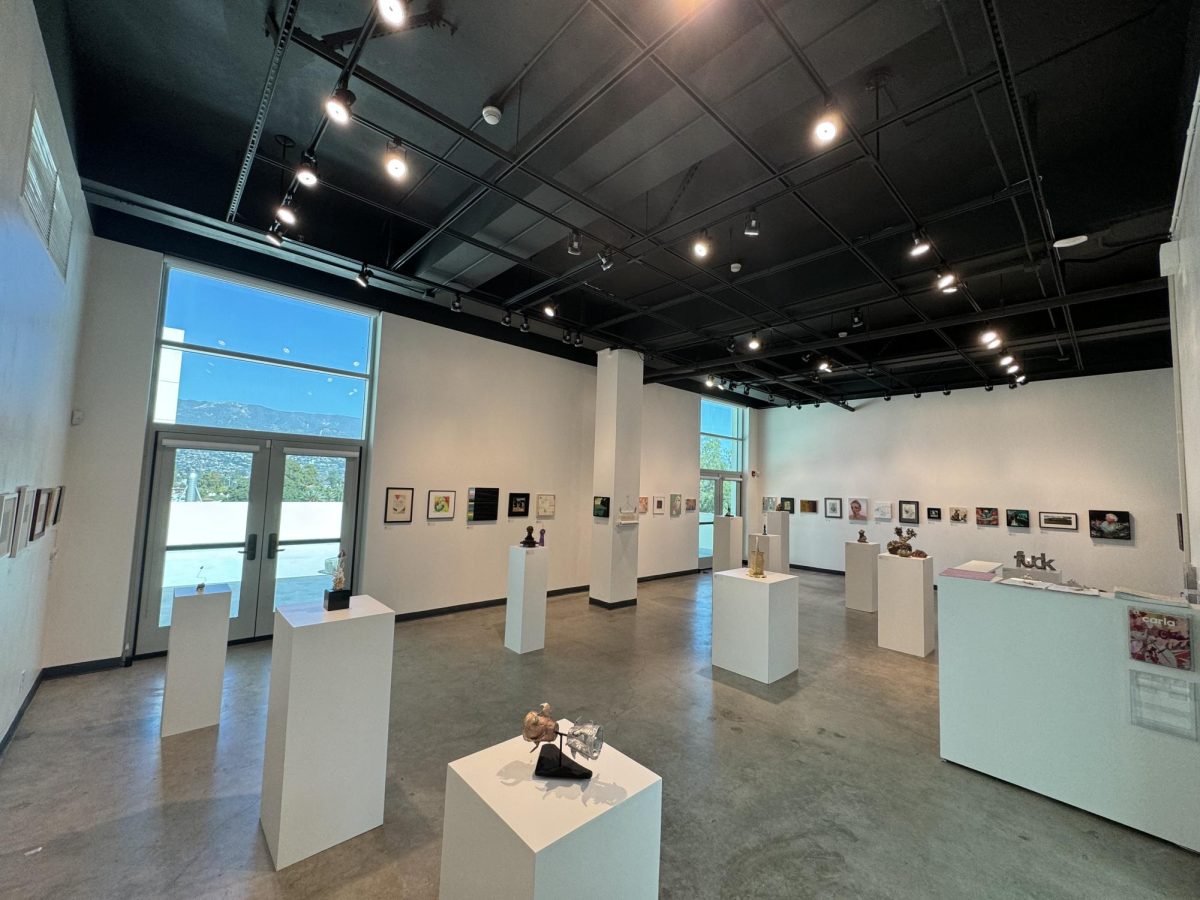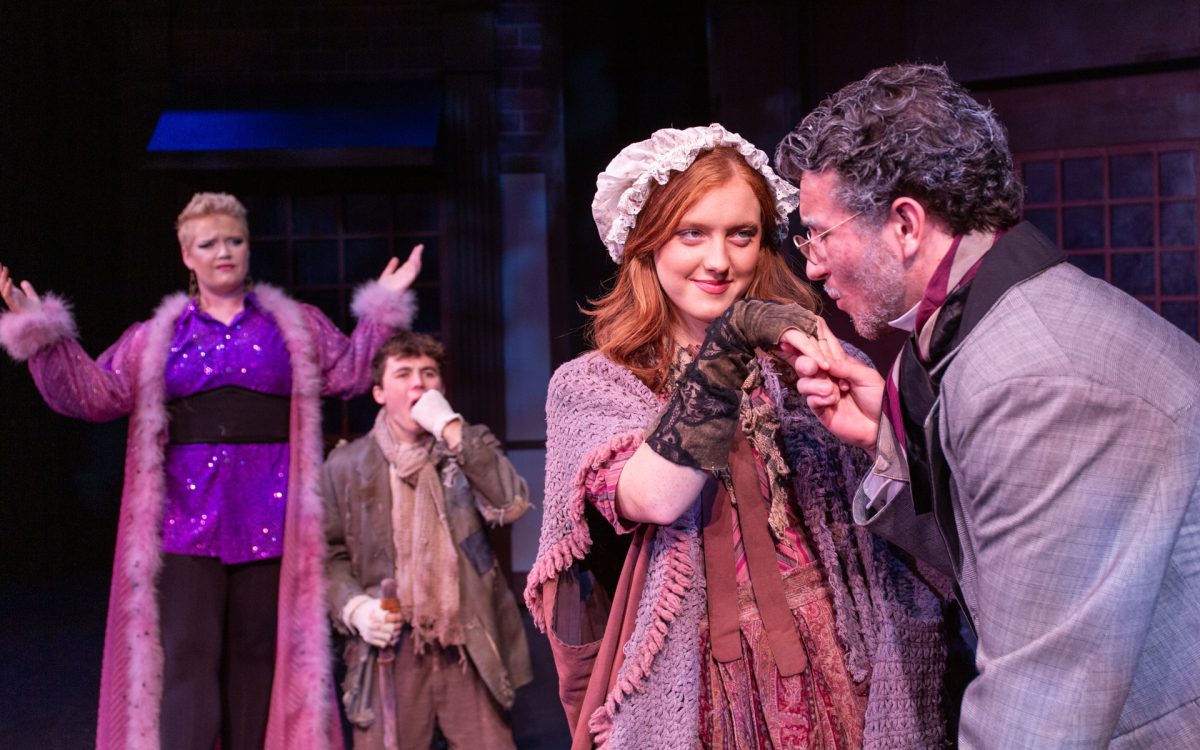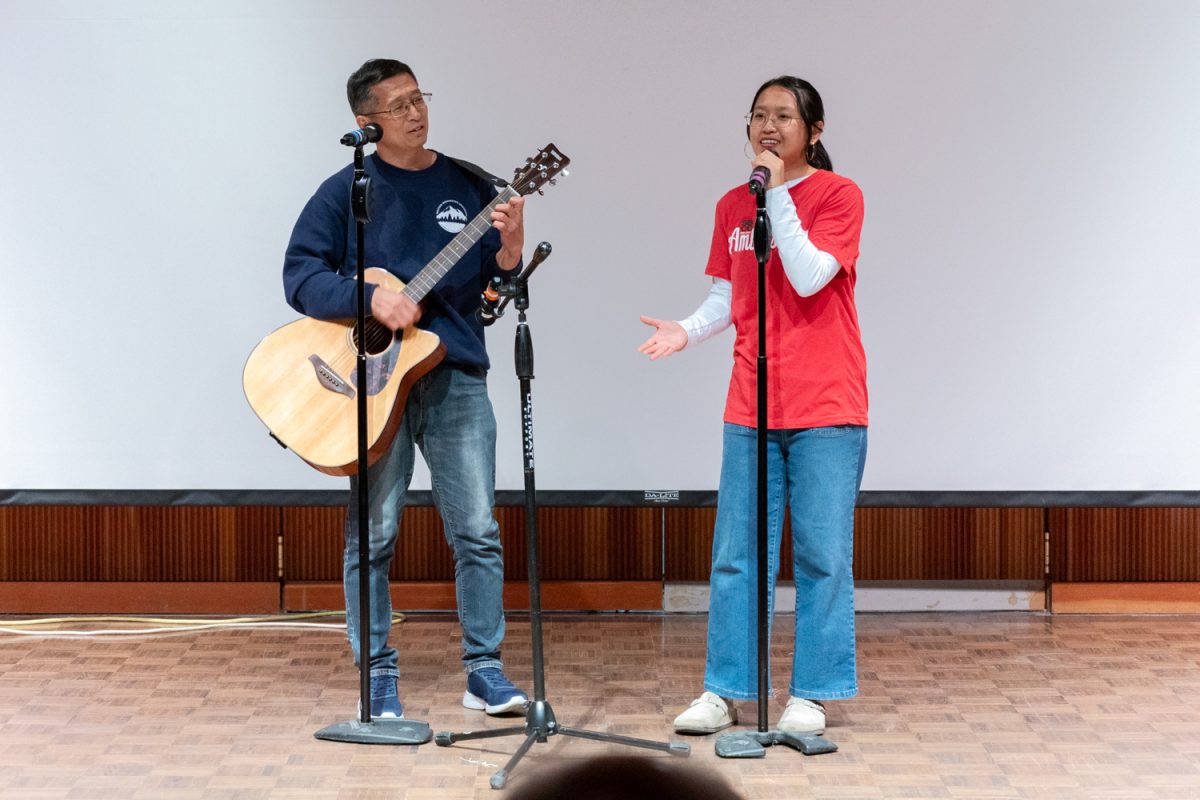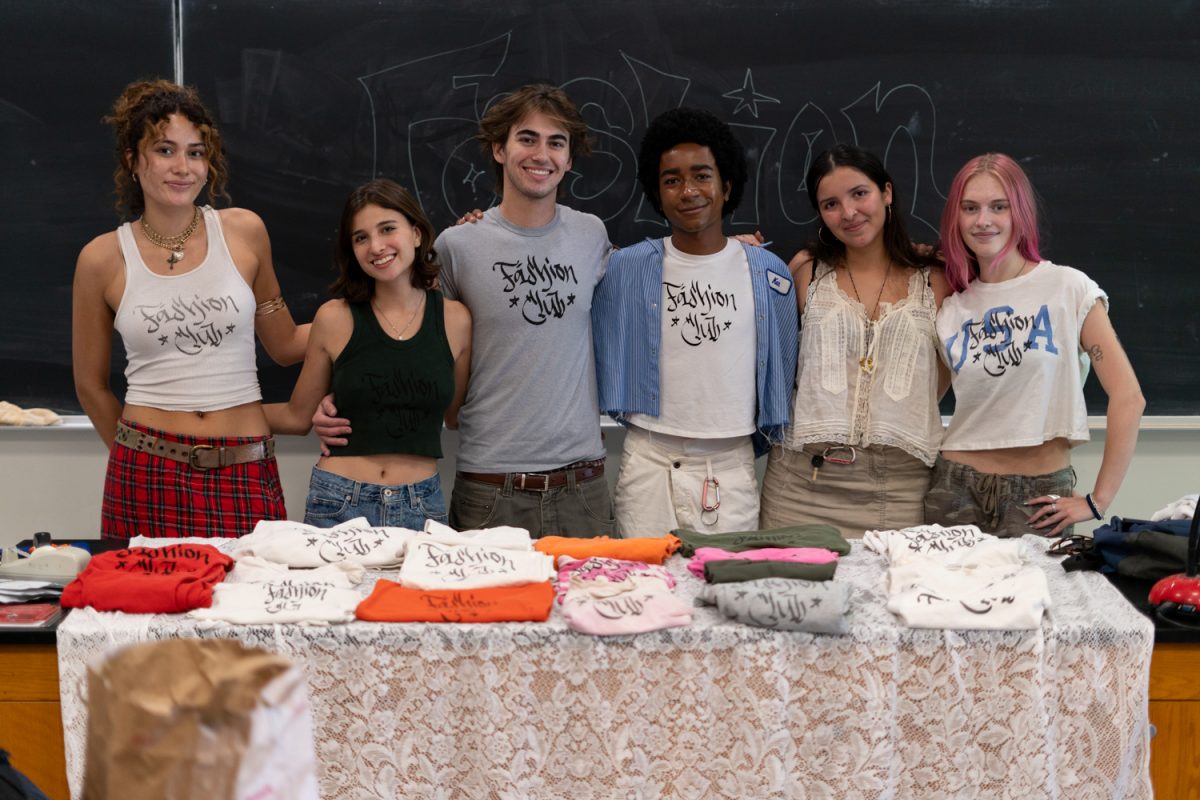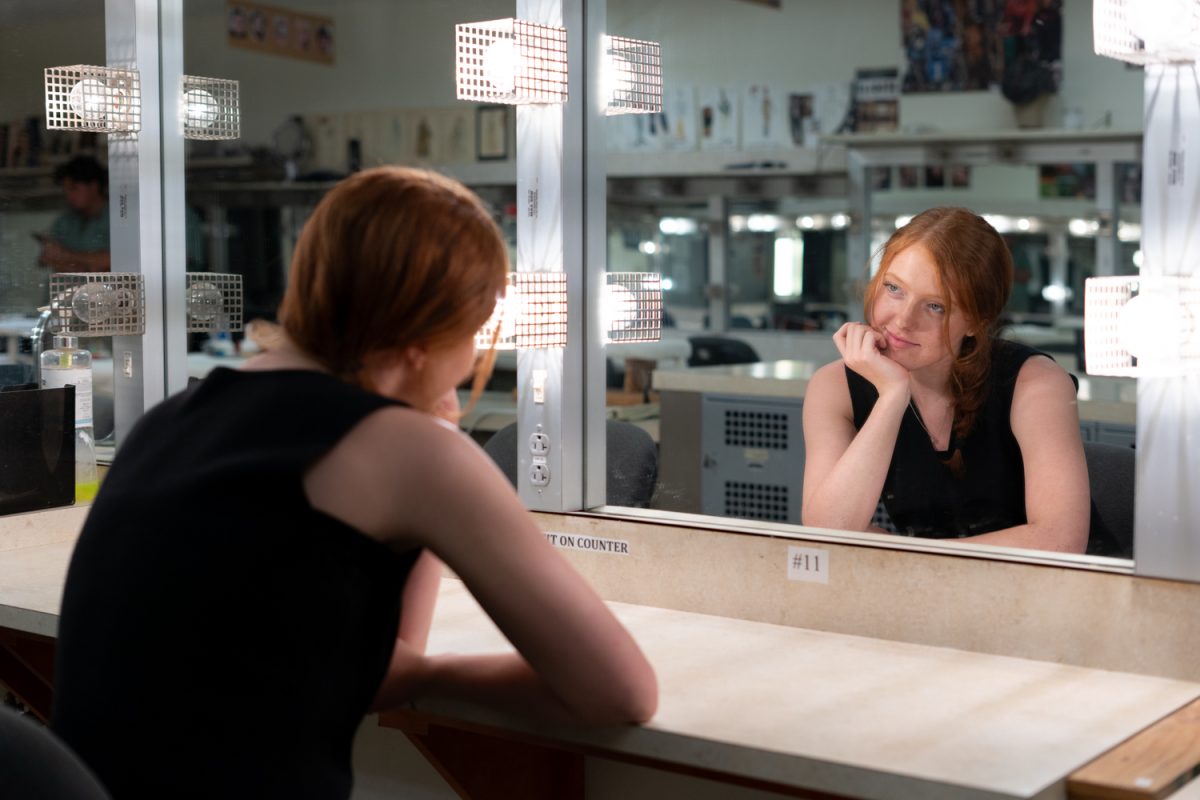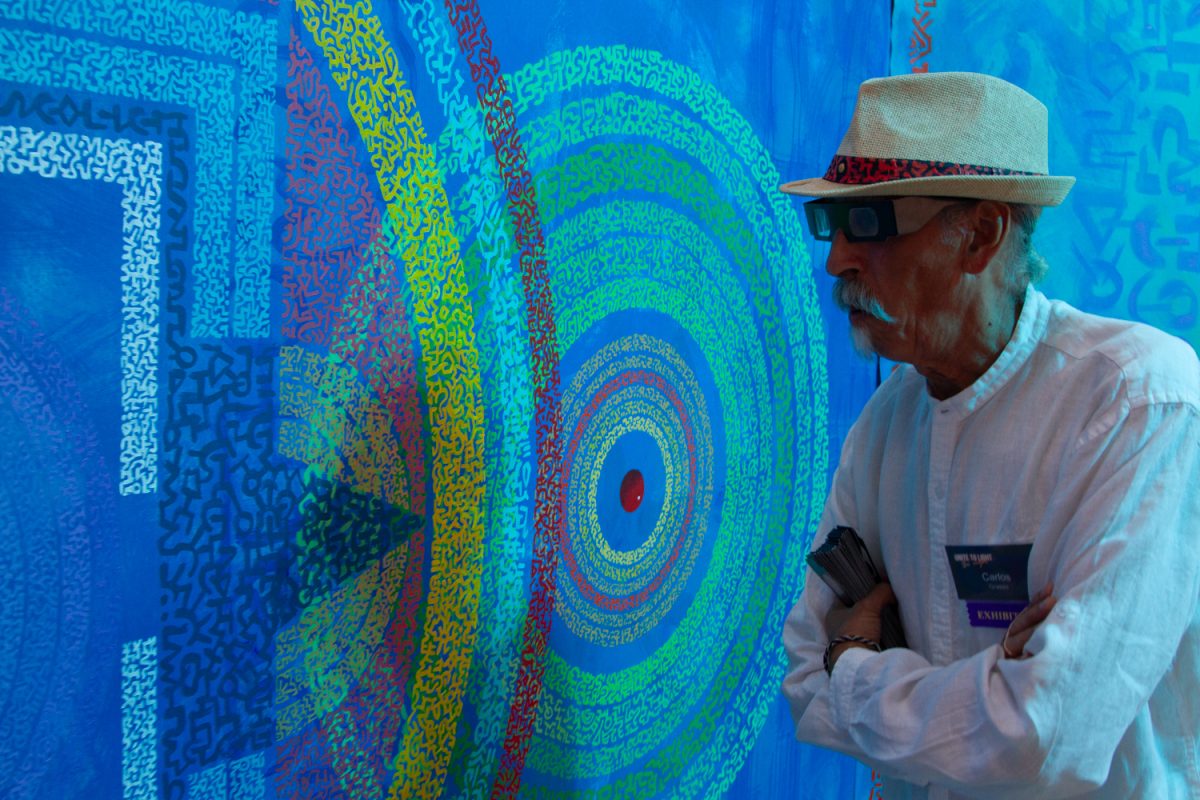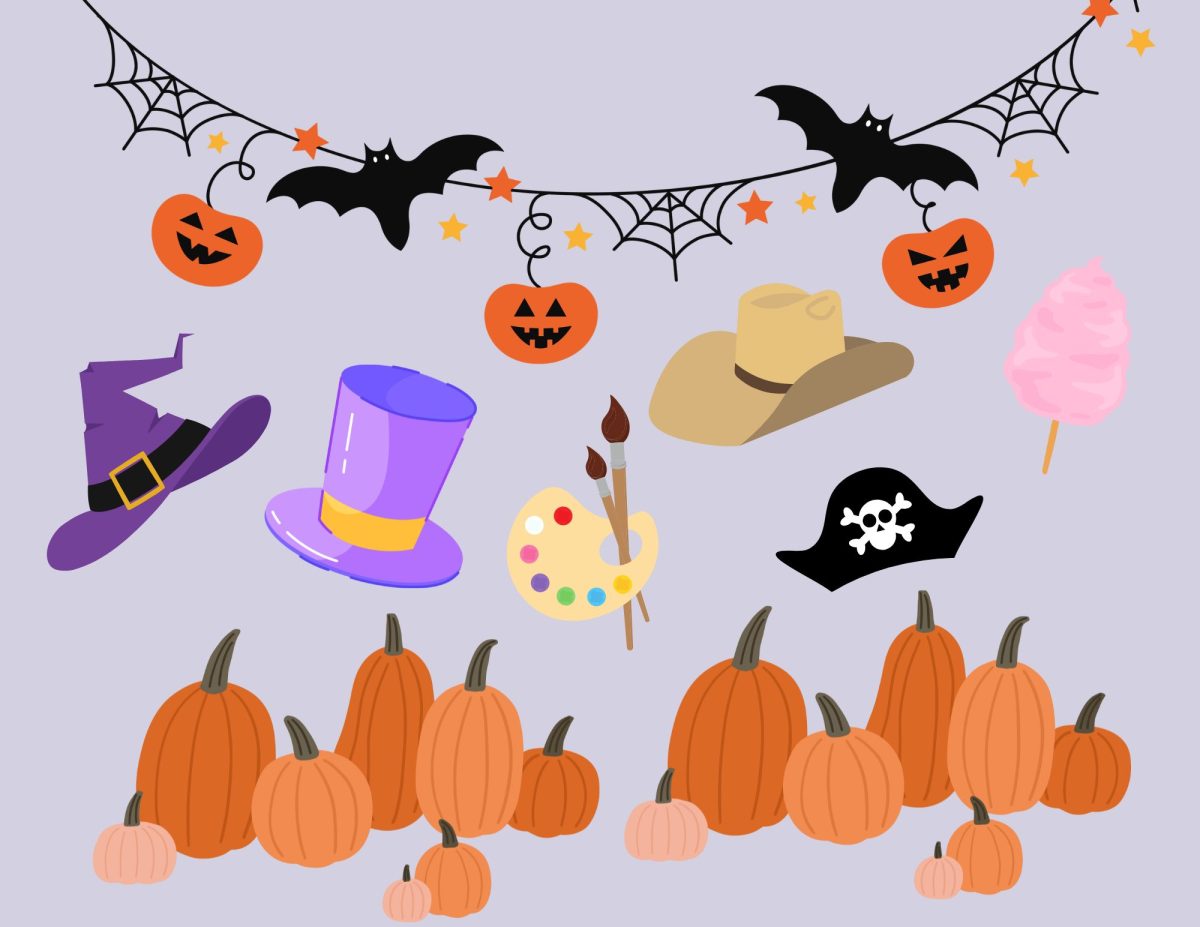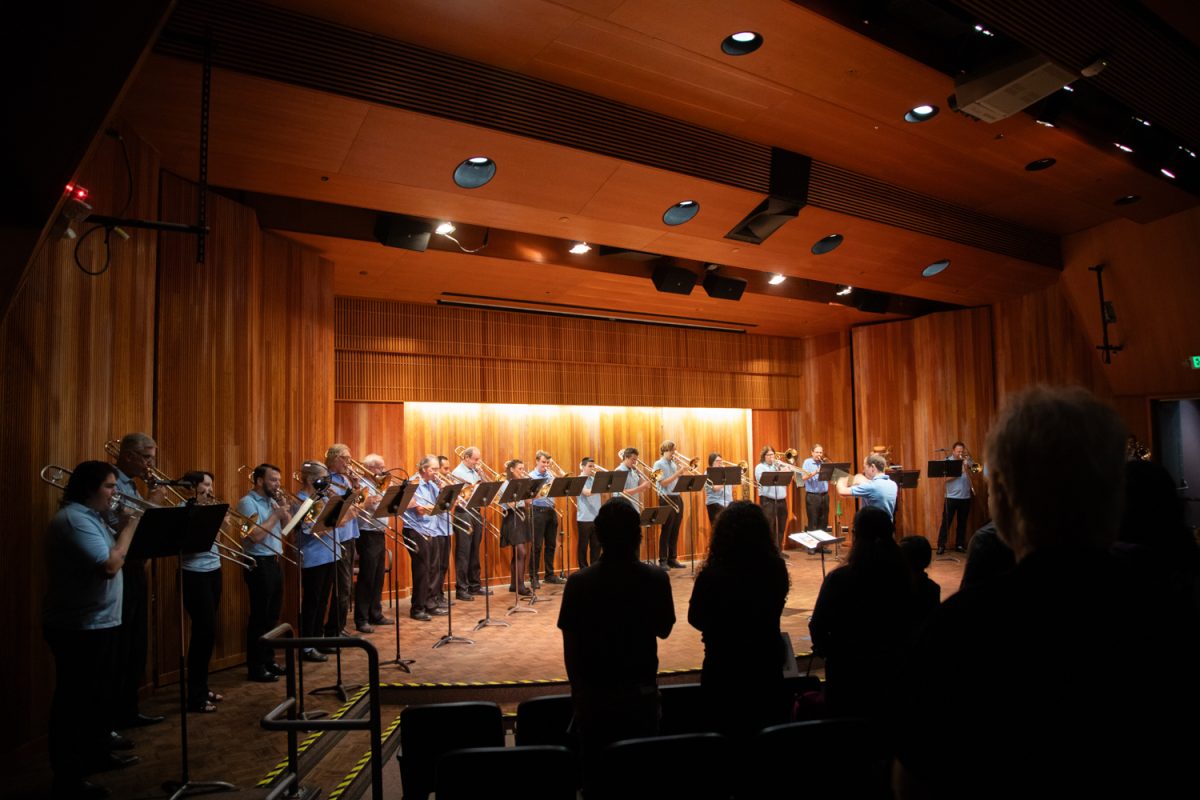Closing out the fall Artist Lecture series hosted by the Atkinson Gallery, an installation artist reminds all of the importance of art culture and the personal translation of it.
Rebecca Bollinger is a sculpture, sound, installation and ceramics artist whose work varies from faces painted on cookies to sound translations of her favorite pieces of art.
Los Angeles in the seventies was Bollinger’s playground to explore her known artistic future. “The spaceship house” as she called it as a child, was also known as John Lautner’s home in the L.A. hills, the base platform of her work.
Bollinger’s repertoire of inspiration may have started at a young age but continues to grow everywhere she goes.
Sound is a large aspect of her work. Still shots turned into animated films represent how people in a busy city are only in focus for a minute and then disappear into oblivion, playing with our ideas of perception.
It might have all started with Hollywood sets in the seventies. The Source Family was a radical cult that owned a vegetarian restaurant in L.A. and recently was exposed in a 2012 documentary examining their utopian living.
Bollinger’s work might begin with a painting from one of her favorite artists or a film that keeps her mind wandering but the idea of translating one art form to another is very intriguing for the multi-faceted artist.
Similar to James Turrell’s light work, Bollinger had her light installation displayed at a Catholic church, where the idea of perceptions and auras are intertwined.
Ceramics, sound and time-based media have been the main components of the artist’s work, with a heavy emphasis on how we, as spectators view the world around us.
“…This idea of perception and how these references that we have— whether in our peripheral vision or something right in front of us, how it’s constantly shifting and there are all these cues on how we perceive things in the world,” Bollinger said.
Her current work has been pieces involving screen printing, such as “Postcards from Japan,” 2013, made from acrylic and sign paint on porcelain. In an exhibit curated by Glen Helfand at the Asian Art museum featured this work as well as a recreated 78 r.p.m. record, also using acrylic and porcelain— inspired from her late father’s love of vintage Japanese music.
Bollinger’s lecture focused on her background growing up in the hills of L.A. and her love of studio art.
“I love going to people’s studios. There is so much information there,” said Bollinger. “It’s where the interesting work happens.”
It’s all about the process for the 4-D artist. The end result might be the boring part for her, as she believes that the studio is where the magic happens.
When asked questions at the end of the speech, someone asked her what she hopes viewers will perceive from her work. She responded, “Abstraction, it can have different kind of readings…sometimes the conceptual underpinnings are important and sometimes they are not…depending on the context.”


